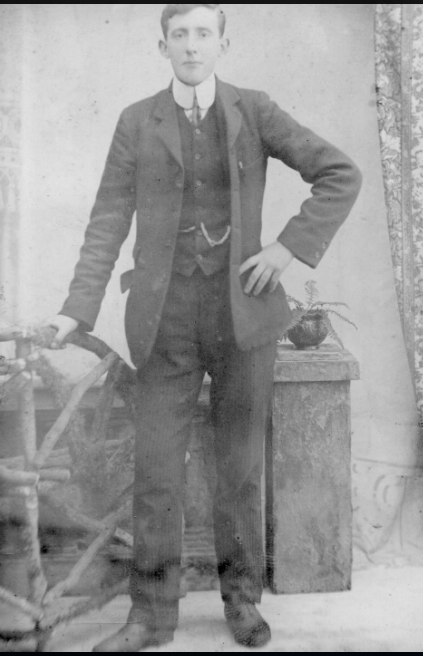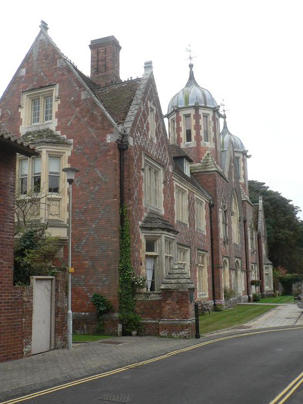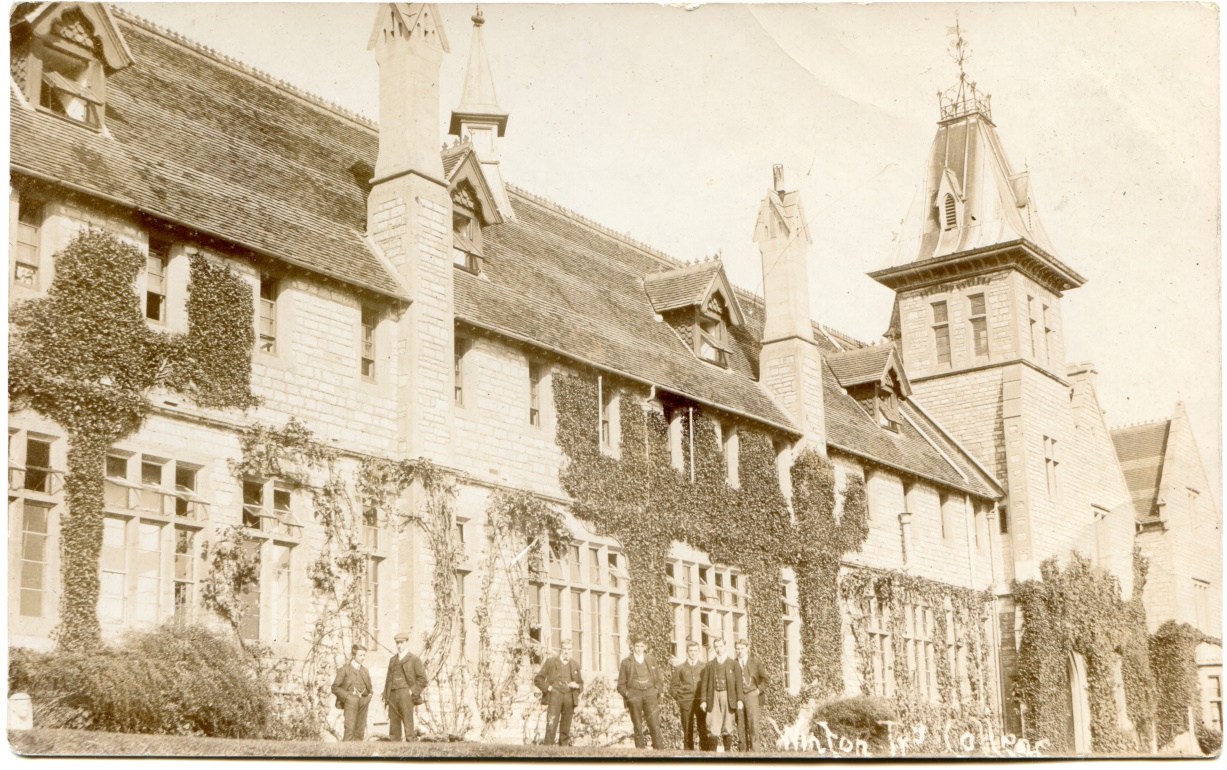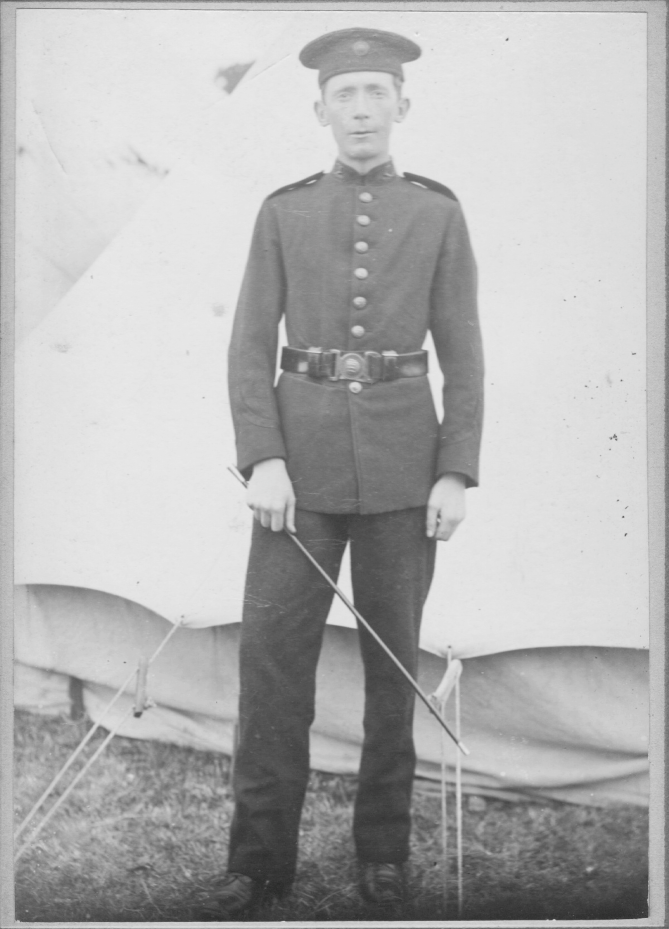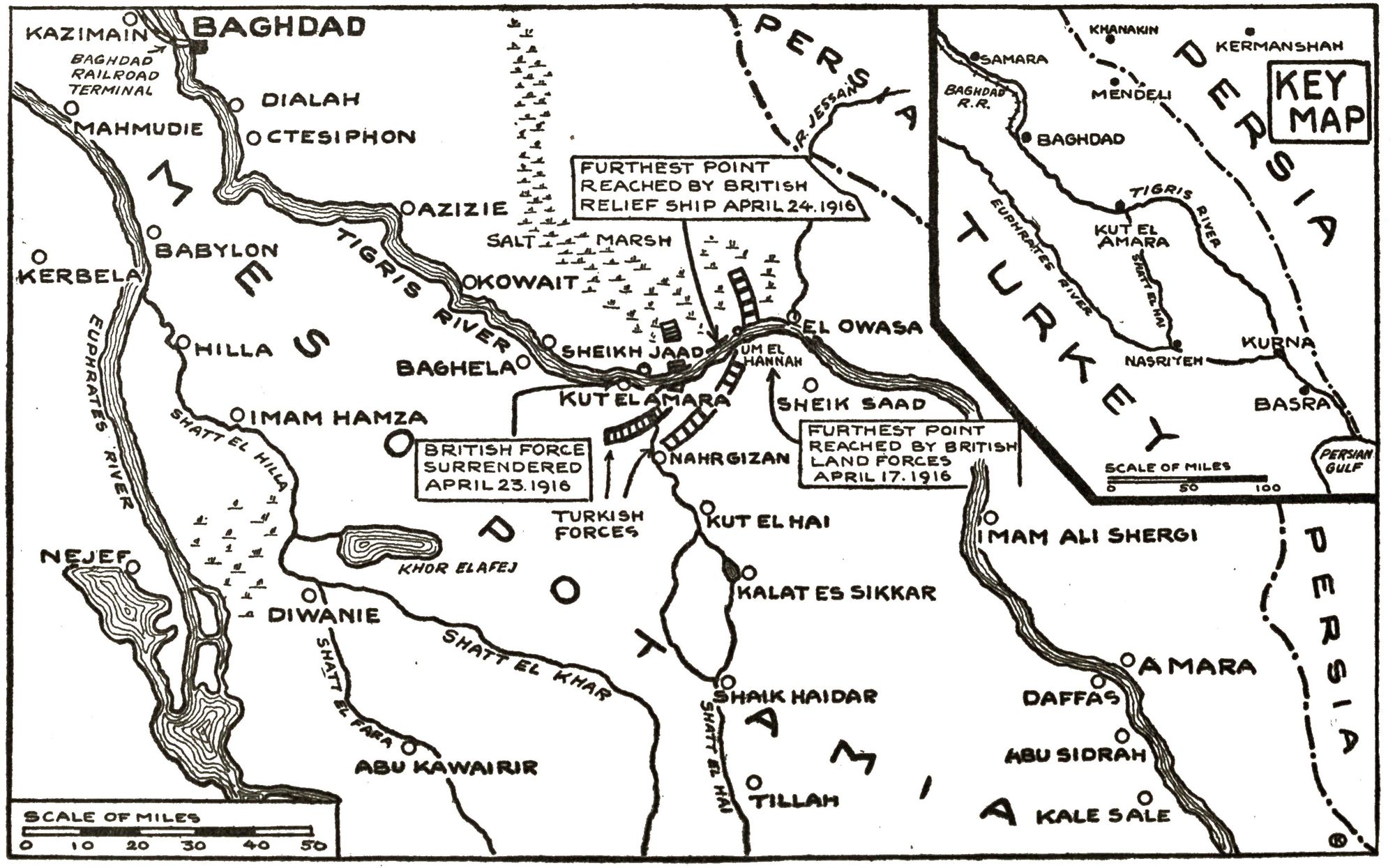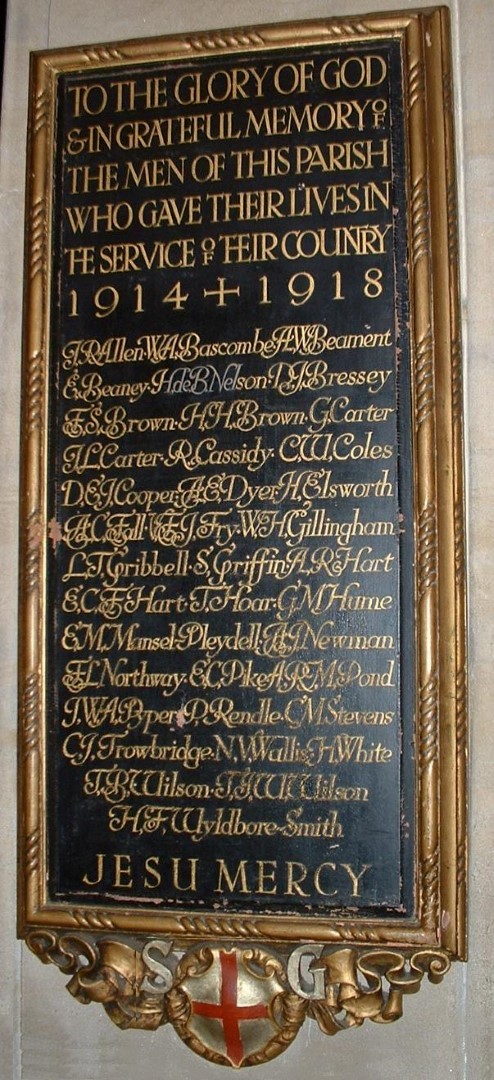Edward Clifford Frank Hart
Private Edward Clifford Frank Hart, of the 1/4th (T.F.), attached to the 2/4th Battalion Hampshire Regiment, Regimental Number 1850, died of illness, aged 26,on 11th July 1916, and is buried at Amara War Cemetery, Iraq.
Early Life
Edward was born on 30th July 1890, in Canford, Dorset, to Richard and Ellen Hart. He was the seventh of eight children. In the census of 1891, the family was living in Broadstone, Canford, near Poole in Dorset. Richard (46) was a mariner, his wife Ellen was 38 years old. The eldest child Mary Ellen (15) was a pupil teacher. The other children were Emma Blanche (13), Annie Eliza (11), Flora May (8), William Percy (6), Albert Richard (3) and Edward aged 8 months. Richard worked on ships and features on the crew lists of ships such as The Volunteer, The Marchioness of Bute,1 and Gartcraig. By the next census ten years later Richard had died. Mary Ellen had married James Henry Martin, a newspaper clerk, and they were living in Branksome, Dorset. Mary was no longer teaching. Another child had been born, Henry George Victor (7). Emma was now a dressmaker, Annie an infant schoolmistress and William a pupil teacher. The family were living in Wimborne Road, Canford Magna, Dorset. Edward attended Queen Elizabeth’s School in Wimborne2 having begun his education at the National School, Broadstone. Edward was a pupil teacher at Wimborne Minster Boys School.
By the 1911 census Edward was living at 10, Church Street, Lyme Regis in the house of Jane Pym, a retired parlour maid, who was now a boarding house keeper. Edward was her only boarder and is described as a single teacher. He had not yet undertaken any formal College training and would have been classed as an uncertificated teacher.
His College Student Record has him working as an assistant teacher at Lyme Regis Church of England School for 3½ years. The term assistant teacher is not always helpful as it can also apply to teachers who have finished their college course but are still working towards full certification, which took two years. It could equally apply to a certificated teacher in a junior role in school. In Edward’s case we know that he had not yet attended college when he was recorded by the census in Lyme Regis. The rest of the family were at Oak Cottage, Broadstone, Dorset. Annie, a certificated teacher, Flora, a dressmaker and Henry were the only children still living with Ellen.
Winchester Training College
Edward began his two year course of professional training at Winchester Diocesan Training College in 1912. He had taken the Preliminary Examination in 1911 and the Archbishops’ Religious Knowledge Examination for entry in 1912, achieving a first class pass.
The Wintonian Magazine 1910-1914, gives us snippets of information about the interests and extra-curricular activities of the students. There is just one mention of Edward in the Indoor Sports section, where he was noted for winning the Open Bridge Tournament with his partner Harold Rose. They beat Lewis and Paice in the final.
College rules were strict by modern standards. This example of the procedure for applying for leave, published in 1922, gives an idea of some of the constraints placed on the students after the war; it is probably fair to assume that they were just as stringent pre-war:
- All applications for leave of absence must be made to the Principal who will provide a printed pass. This must be handed to the Vice-Principal before students leave and they must report their return to him at the specified time.
- If leave involves absence from any meal the Dining Hall Monitor must be informed.
- Smoking is not allowed on the Terrace or in any room or passage except in the Common Rooms.
- Students must not leave the College grounds after evening Private Study.
- Books used in Lecture Rooms must be confined to the desks and shelves provided.
Winchester training College photograph courtesy of Alwyn Ladell
At the end of his first year at college, Edward had an average mark of 58.3% in his exams, which placed him 22nd on the order of merit list for his year group. By Christmas of his second year he had made a significant improvement with an average mark of 68.9% and 13th in the order of merit. Edward was classified with a grade 2 pass at the end of his first year. At the end of his course Edward was awarded D grades in Teaching, Music, and Drawing, and a C for Science. He continued to achieve the highest level of pass each year in the Archbishops’ Examination.
According to the NUT War Dead Schools List, Edward was working for East Dorset Education Board when he left College and his address is given as the family home, Oak Cottage. He may not have been able to take up his post before war was declared.
Winchester to Mesopotamia
Edward was one of the many students who chose to enlist with the Hampshire Regiment. This made perfect sense when you consider that most of the students had enlisted in the 4th Battalion Territorial Force of the Hampshire Regiment while they were at College. A significant number of them took up teaching jobs in and around the Winchester area and had continued their association with the Regiment. Those who were members of the Territorials, taking part in the summer manoeuvres on Salisbury Plain, from 25th July to 4th August 1914, were mobilised on 5th August, following the declaration of war. Training was undertaken on Salisbury Plain at Sling Plantation and Bustard Camp before the 1/4th Battalion left for Poona, India on the 9th October, followed by the 2/4th Battalion who left for Quetta, India, now modern-day Pakistan, on 12th December. Edward was one of those who headed for Quetta.
The group of Wintonians 3 in the 1/4th Hants had been sent to Mesopotamia, where, under Major-General Townshend, they were fighting the Ottoman Army. The original objectives of the campaign against the Turks in Mesopotamia had been achieved and ‘mission creep’ had left the Allies severely undermanned. Volunteers to join them were requested from amongst the men at Quetta, and Edward answered the call. Captain Goddard of the 2/4th Hants described the send-off:
2/4th HANTS REGIMENT AT QUETTA
The draft of men from the above Battalion who volunteered for active service in the Persian Gulf were inspected by General Hardie, G.O.C. Commanding the 2nd Brigade, Quetta Division, on Monday, October 11th, 1915. They were paraded in full marching order, and they looked without exaggeration a fine body of menHe wished all the men God-speed and a speedy and safe return to England. He said that they were all aware of the hardships, but he knew they would face them with a good spirit, and pull through like the true Hampshiremen always did.
On Wednesday morning the men again inspected by the G.O.C., General Grover (in command of the Quetta Division). He made a few brief remarks to the men, and especially mentioned how pleased he was by the progress the Battalion had made since arriving at Quetta. Headed by the band and drums, the draft left barracks for Quetta Station.
Map showing the area around Kut and the extent of the Relief Efforts
We desire to express the sympathy of the whole parish to Mrs Hart and her family in the death of her son Frank 4,of the 2/4th Btn Hampshire Regiment who died in hospital in Basra.
Edward is also commemorated on the Broadstone War Memorial, along with his older brother Lance Corporal Albert Hart of the 1/7th Middlesex Regiment, also a teacher, who was killed in action on 23rd February 1917 and is buried at Pont-Du-Hem Military Cemetery, France.
Researcher and Author: Dee Sayers
Footnotes
- The Marchioness of Bute was a paddle steamer that in 1908 was involved in a collision while engaged in passenger trade on the River Tay.
- Queen Elizabeth’s School was founded by Lady Margaret Beaufort, the mother of Henry VII. Queen Elizabeth I confirmed the provisions made in Lady Margaret’s will as long as the school was renamed Queen Elizabeth’s Free Grammar School in Wimborne Minster. In the eighteenth century cockfighting featured on the curriculum.
- Wintonian is the name given to any former student of Winchester Training College or the establishments that came after it.
- Edward is also referred to as Frank on the Broadstone War Memorial.
- Amara (Kut-al-Amara is a different place) was first occupied by the Mesopotamian Expeditionary Force on 3rd June, 1915. A hospital was established there immediately and the medical facilities increased further during the next two years. By April 1917 seven general hospitals and some smaller units were stationed there. Amara War Cemetery contains 4621 burials from the First World War, more than 3000 of which were brought into the cemetery after the Armistice. 925 of the graves are unidentified. In 1933 all the headstones were removed from the cemetery when it was discovered that salts in the soil were causing them to deteriorate. A screen wall was erected with the names of those buried in the cemetery engraved upon it.
Sources
Commonwealth War Graves Commission, (2018). Home page. [online] Available at www.cwgc.org/ [Accessed 2018].
Crowley, P. (2016). Kut 1916: the forgotten British disaster in Iraq. Stroud: The History Press.
Floyd, J. (unpublisged). Family records, information and photographs.
Geograph (2007). Wimborne Minster: the old grammar school – image. [online] Available at: http://www.geograph.org.uk/photo/564113 [Accessed 2018].
National Union of Teachers. (1920). War Record 1914“1919. A Short Account of Duty and Work Accomplished During the War. London: NUT.
Pixabay (2015). The Cobb at Lyme Regis. [online] Available at: https://pixabay.com/en/the-cobb-lyme-regis-dorset-coast-2580419/ [Accessed 2018].
Sayers, D (2018). Signature photograph from the student register. Winchester: Hampshire Record Office 47M91W/D1/2.
Vickers, J. The University of Winchester Chapel Memorial Rail image.
Wikimedia Commans (2015). File: Kut-el-Amara-map.jpg. [online] Available at: https://commons.wikimedia.org/wiki/File:Kut-el-Amara-map.jpg [Accessed 2018].
| University of Winchester Archive “ Hampshire Record Office | ||
| Reference code | Record | |
| 47M91W/ | P2/4 | The Wintonian 1899-1900 |
| 47M91W/ | P2/5 | The Wintonian 1901-1902 |
| 47M91W/ | P2/6 | The Wintonian 1903-1904 |
| 47M91W/ | P2/7 | The Wintonian 1904-1906 |
| 47M91W/ | P2/8 | The Wintonian 1905-1907 |
| 47M91W/ | P2/10 | The Wintonian 1908-1910 |
| 47M91W/ | P2/11 | The Wintonian 1910-1914 |
| 47M91W/ | P2/12 | The Wintonian 1920-1925 |
| 47M91W/ | D1/2 | The Student Register |
| 47M91W/ | S5//5/10 | Photograph of 5 alumni in Mesopotamia |
| 47M91W/ | Q3/6 | A Khaki Diary |
| 47M91W/ | B1/2 | Reports of Training College 1913-1914 |
| 47M91W/ | Q1/5 | Report and Balance Sheets 1904- 1949 |
| 47M91W/ | R2/5 | History of the Volunteers Company 1910 |
| 47M91W/ | L1/2 | College Rules 1920 |
| Hampshire Record Office archive | ||
| 71M88W/6 | List of Prisoners at Kut | |
| 55M81W/PJ1 | Managers’ Minute Book 1876-1903 | |
| All material referenced as 47M91W/ is the copyright of The University of Winchester. Permission to reproduce photographs and other material for this narrative has been agreed by the University and Hampshire Record Office. | ||


